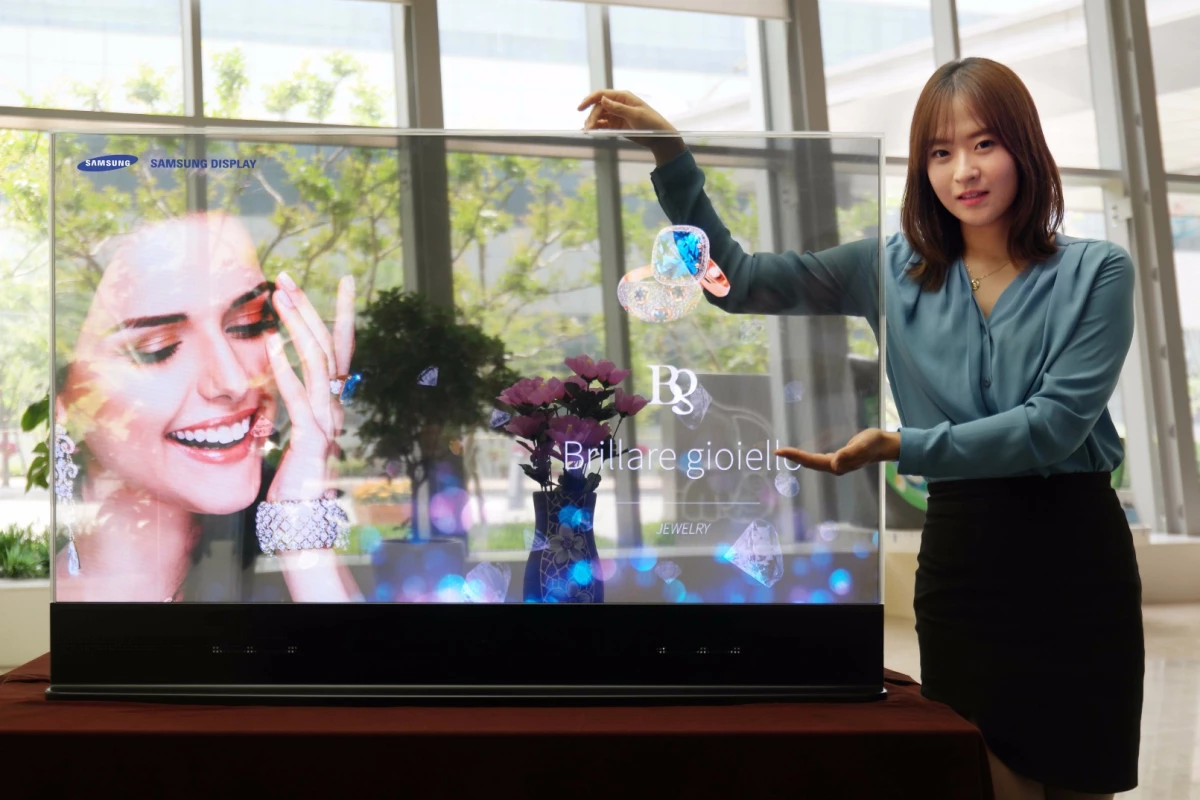Transparent and reflective displays mightlook cool, but in terms of the home, theirapplications are limited. However, bricks and mortar shops looking for sometechnological wizardry to get shoppers through the door are a different proposition. So itshould come as no surprise that Samsung chose this week's Retail Asia Expo 2015in Hong Kong to unveil the first commercial use of its Mirror and Transparent OLEDs.
Transparent and reflective displays aren'tnew, with Samsung rolling out the first mass produced transparent LCD panels in2011 and Philips' HomeLab R&D outfit unveiling its LCD Mirror TV in 2004, the latest evolution of which Philips still sells under its Reflex Mirror TV line, primarily targetedat hotels. But just like conventional TVs, reflective and transparent OLEDs promise superior performanceto their LCD forebears.
Samsung Display claims its Mirror OLEDpanel boasts a reflectance level of greater than 75 percent and outdoes thereflectance of competitor Mirror LCDs by at least 50 percent. It also offers color gamut of over 100 percent of NTSC compared to around 70 percent of NTSCfor Mirror LCDs, and a contrast ratio of over 100,000:1 compared to 4,000:1.Response rate is also faster at under 1 ms compared to 8 ms. Additionally, OLEDdoesn't require any ambient backlight as is the case with LCDs.
Similar benefits can be found withthe Transparent Display OLED, with a color gamut of 100 percent compared to 70percent of NTSC for transparent LCDs and transmittance levels of 45 percent compared to around 10percent. It also offers transparency levels of 40 percent, compared to the around15 percent of Samsung's transparent LCDs. The OLED panels also boastwider viewing angles.
So they both boast better specs, but whatcan retailers do with them? Well, Samsung has paired the Mirror OLED displaywith Intel's RealSense technology. This sees the inclusion of a front-facing camera forcapturing facial movements and tracking finger and hand movements, arear-facing camera that can scan and measure rooms and objects, and a snapshotcamera that allows a photo's background to be altered after the photo has beentaken.
These come together to enable the displayto create a "virtual fitting room" that allows customers tovirtually try on clothing, shoes and jewelry and see how they will look on them– at the expo, Samsung was showing a "virtual necklace" displaycreated for the Chow Sang Sang jewelry company. Samsung also envisages itsMirror Display replacing some traditional mirrors around the home at some pointin the future.
The Transparent Display will also integrateRealSense technology, enabling gesture and voice control of 3D-rotatableviewing systems in locations such as car dealerships. They could also serve as interactivesignage for public and transport information and in hotels and retailers.
Source: Samsung Display





